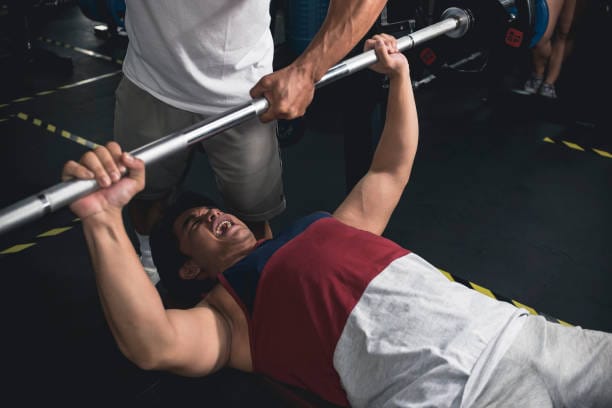- Deltoros Insider
- Posts
- When & How to Lift Heavier Safely
When & How to Lift Heavier Safely
3 Min Read
Lifting heavier weights is key to building muscle, gaining strength, and pushing your fitness to the next level. But how do you know when you’re ready to increase the weight, and what’s the safest way to do it?

In this newsletter, we’ll cover the signs that indicate you’re ready to lift heavier and provide tips on maintaining proper form and safety techniques to avoid injury.
Signs You’re Ready to Lift Heavier
It’s exciting to progress in your strength journey, but it’s important to know when your body is ready to handle more weight. Here are the signs that you’re ready to increase your lifting load:
1. Your Current Weight Feels Too Easy
If you’re consistently completing your reps with good form and the weight feels light, it’s a sign you’re ready to increase. When you no longer feel challenged by your current weight, it’s time to step it up.
Key Takeaway: If you can perform more than the target reps easily, it’s time to increase the weight by 5-10%.
2. You Can Do Extra Reps
If you find that you’re regularly hitting extra reps beyond your workout plan, your muscles are adapting to the weight. To keep progressing, increase the weight slightly so that you’re back to performing the recommended number of reps with difficulty.
Key Takeaway: When you can exceed your target reps, it’s time to challenge your muscles with heavier weights.
3. Your Form Stays Solid Throughout
Good form is crucial when lifting heavier. If you can maintain proper form through every rep of your current set without breaking or struggling, your muscles are likely strong enough to handle more weight.
Key Takeaway: Solid form during your sets indicates you’re ready for a new challenge.
4. You’ve Stalled in Progress
If you’ve hit a plateau and are no longer making gains in strength or muscle size, increasing the weight can stimulate new muscle growth. Lifting heavier breaks the plateau by challenging your muscles in new ways.
Key Takeaway: A plateau in strength or size is a sign you need to increase the intensity of your training.

How to Lift Heavier Safely
Increasing your weights is exciting, but doing it wrong can lead to injury. Follow these tips to lift heavier while keeping safety a top priority:
1. Prioritize Perfect Form
Before you increase the weight, ensure you have perfect form with your current load. Lifting with improper form—especially when adding more weight—can put unnecessary strain on your joints and muscles, leading to injuries like sprains, strains, or worse.
Pro Tip: Never sacrifice form for weight. If your form breaks down, lower the weight until you can execute the movement correctly.
2. Increase Weight Gradually
When you’re ready to lift heavier, don’t make large jumps in weight. Instead, increase your load by 5-10% for upper-body exercises and 10-15% for lower-body exercises. This gradual increase helps your body adapt without overwhelming your muscles and joints.
Key Takeaway: Small, gradual increases are the safest way to progress without risking injury.
3. Use a Spotter or Safety Equipment
When lifting heavier, especially for exercises like bench press or squats, always use a spotter or safety equipment like squat racks with safety bars. This ensures that if you can’t complete a rep, you won’t be stuck under a heavy load.
Pro Tip: If you don’t have a workout partner, use machines or racks designed for safety, like a Smith machine or power rack with adjustable safety catches.
4. Warm Up Before Heavy Lifting
Warming up is essential before lifting heavy weights. It prepares your muscles, joints, and nervous system for the increased workload. Start with lighter weights or bodyweight exercises to get your body ready for the heavier sets.
Example Warm-Up:
5-10 minutes of light cardio
Dynamic stretching (leg swings, arm circles)
1-2 light sets of the exercise you plan to go heavy on.
5. Focus on Controlled Movements
When lifting heavier, it’s easy to let momentum take over. However, using momentum instead of muscle control reduces the effectiveness of the lift and increases the risk of injury. Focus on slow, controlled movements during both the lift and the lowering phase to fully engage the muscles and stay safe.
Key Takeaway: Control the weight throughout the entire range of motion to ensure safety and maximize gains.

Exercises to Safely Progress with Heavier Weights
Here are some key exercises where you can safely increase the weight, along with tips to maintain proper form and prevent injury:
1. Squats
Squats are one of the most effective compound lifts for building leg strength, but it’s crucial to maintain proper form, especially when increasing the weight.
Form Tips:
Keep your chest up and core engaged.
Ensure your knees track over your toes, not inward.
Use a spotter or safety bars in the rack for heavy sets.
2. Deadlifts
Deadlifts target multiple muscle groups, including your hamstrings, glutes, and lower back. As the weights get heavier, it’s important to keep your back neutral to avoid injury.
Form Tips:
Keep your back flat, not rounded, throughout the lift.
Engage your core to protect your lower back.
Use a mixed grip or lifting straps as the weight increases to improve grip strength.
3. Bench Press
The bench press is one of the most popular exercises for building upper-body strength, but lifting heavy without proper support can be risky.
Form Tips:
Keep your feet flat on the floor and engage your core.
Lower the bar to your chest in a controlled manner and push back up.
Use a spotter or safety pins to avoid being pinned under the bar.
4. Overhead Press
The overhead press targets the shoulders and upper chest, but improper form can strain your lower back and shoulders.
Form Tips:
Stand with your feet shoulder-width apart and keep your core tight.
Avoid arching your back as you press the weight overhead.
Lower the weight slowly, controlling it through the entire movement.

Watch: How to Lift Heavier Safely
Want more tips on how to safely lift heavier weights? Watch this video for expert advice on increasing your strength without risking injury.
Frequently Asked Questions (FAQs)
1. How do I know when it’s time to increase my weights?
If you can complete all your reps with ease and proper form, or if you regularly exceed your target reps, it’s time to increase the weight by 5-10%.
2. How often should I increase my weights?
It depends on your progress. If you feel your current weights are no longer challenging, aim to increase the load every 2-4 weeks.
3. What’s the safest way to lift heavier weights?
Use gradual weight increases, maintain perfect form, warm up properly, and always use a spotter or safety equipment when needed.
4. Should I lift heavier for every exercise?
No. Focus on increasing weight for compound lifts like squats, deadlifts, and bench presses. Isolation exercises, like bicep curls, typically require slower weight progression.
5. How can I prevent injury when lifting heavier?
Maintain proper form, use safety equipment like lifting belts or wrist wraps, and avoid increasing weights too quickly. Listening to your body is key.
Conclusion
Lifting heavier weights is an essential part of building muscle and strength, but it must be done safely. By recognizing when your body is ready, focusing on proper form, and taking gradual steps to increase weight, you can boost your gains while avoiding injury. Keep these tips in mind as you progress, and you’ll safely reach new levels of strength in no time!